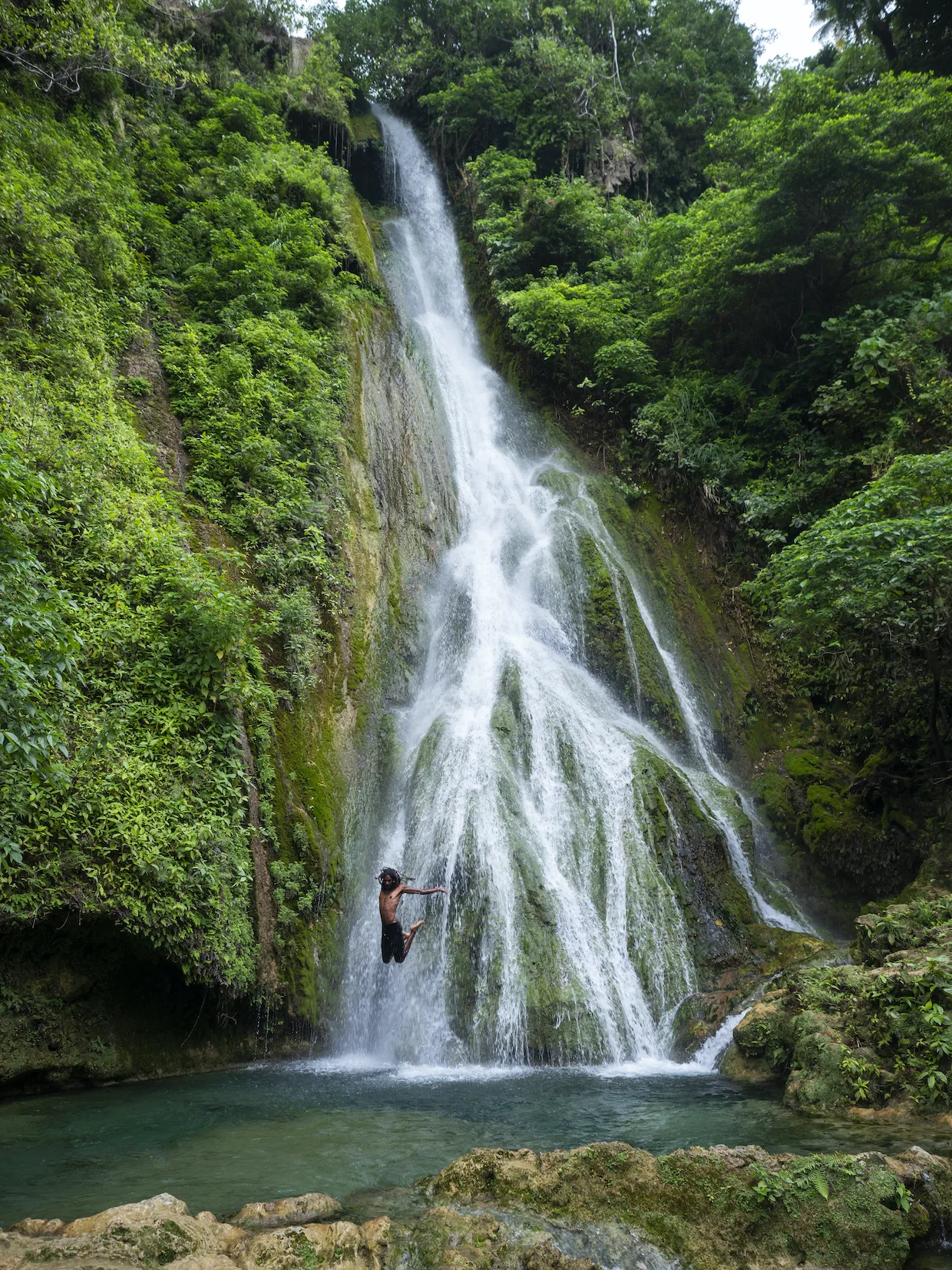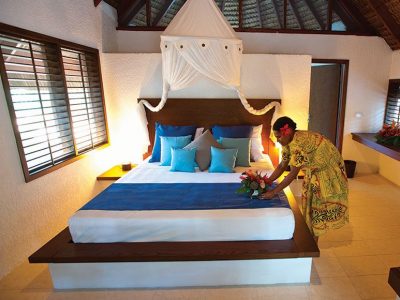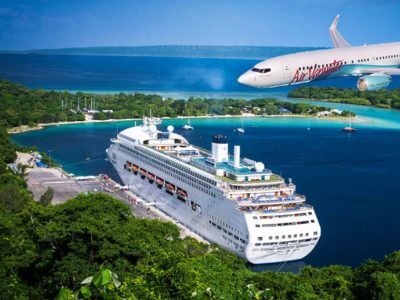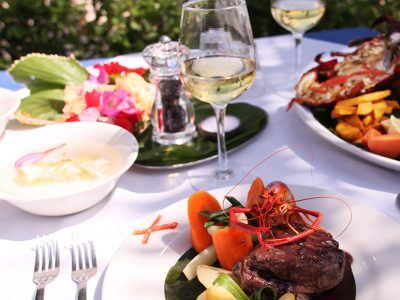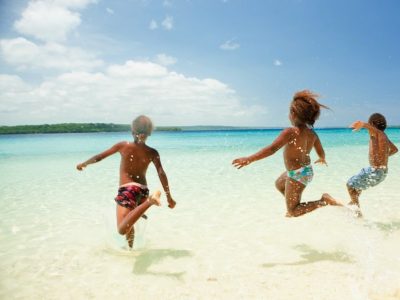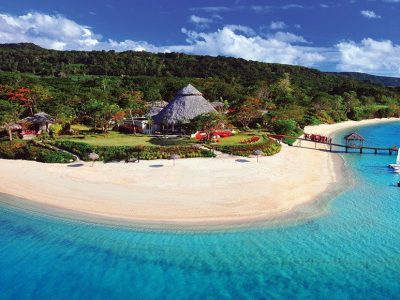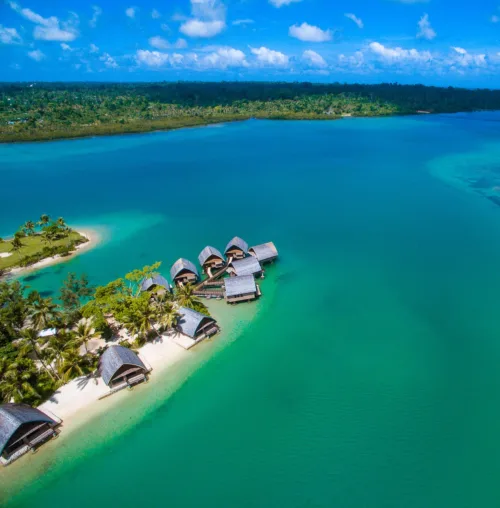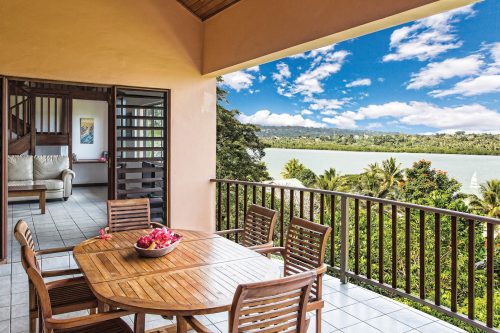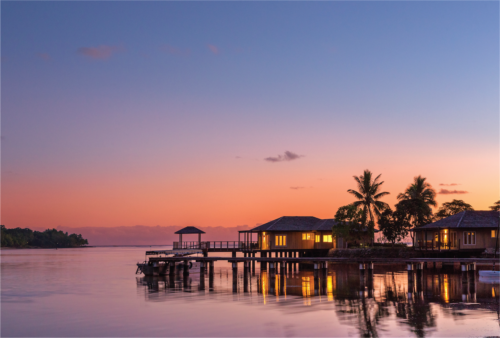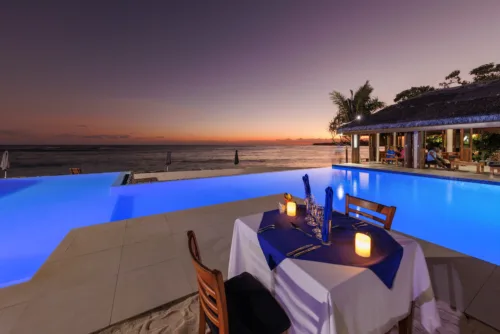The waters surrounding these beautiful islands provide some of the most spectacular and varied underwater exploration in the South Pacific. Experienced divers come from all over the world to swim amongst the WWII wrecks which lie scattered over the seabed.
A tropical paradise, only three hours from Sydney, Vanuatu means ‘the land that has always existed’.
It is made up of 83 islands formed in a Y-shaped archipelago which stretches over some 1,176 kilometres of the Pacific Ocean, halfway between Australia and Hawaii.
Capital and major centres
Although Captain James Cook explored and chartered the Vanuatu archipelago in 1774, which he named the New Hebrides, he ignored the island of Efate and thus missed discovering one of the world’s most beautiful deep-water harbours. Today Efate offers safe anchorage to those who visit the capital, Port Vila, by boat, and there is Bauerfield, the international plane terminal, which is 10 minutes from the capital. Thus, Port Vila is the gateway to Vanuatu and offers visitors a wealth of tourist activities.
Free of skyscrapers, the town is set within a magnificent natural harbour, hibiscus dot the surrounding hills and the air is redolent with the scent of frangipani. A boat trip around Efate and the other island retreats reveals a place untouched by modern civilisation.
Tanna Island has almost 28,200 people who inhabit 92 villages in a 565-square kilometre area. The islanders have remained relatively unchanged by a century-and-a-half of explorers, missionaries and traders. Pentecost Island is a beautiful unspoilt place, home to a spectacular ritual, Naghol. Espiritu Santo is the largest and oldest island with the largest population and the greatest number of natural sights.
The movie South Pacific was inspired by this island and Bali Hai is named after Ambae, located to the east of Espiritu Santo.
The people
Predominantly Melanesian, the people speak English, French and Bislama, a form of pidgin English. The Ni-Vanuatu have populated these islands for centuries and with more than 115 distinctly different cultures and languages still thriving, Vanuatu is recognised as one of the most culturally diverse countries in the world.
History
The first European to visit these shores was Spanish navigator Fernandes de Quiros who landed at Big Bay on Espiritu Santo in 1606. The French explorer, Bougainville, arrived almost 160 years later and in 1774 Captain James Cook charted all the islands and named the archipelago the New Hebrides. In 1839 missionary John Williams attempted to impose Western ways and Christianity on the Ni-Vanuatu and was clubbed to death and eaten. However, the locals had no defences against the slave traders, known as black birders, who shanghaied more than 40,000 people to work on the sugar plantations in Australia.
In the 1860s, British and French interests purchased huge tracts of land for cotton plantations and the Ni-Vanuatu retaliated by killing a number of Europeans, only to suffer extensive naval bombardment of their villages. The French and British jointly colonised the islands in 1906.
During WWII, the 250,000 Americans stationed in Vanuatu brought in enormous amounts of cargo which led the Ni-Vanuatu to believe that such vast wealth could only have come from the gods. The New Hebrides gained its independence in July 1980 and was renamed Vanuatu.
Nature
Vanuatu has rich lush tropical rainforests, volcanoes, sparkling blue lagoons, cascading waterfalls and beaches that range from silky white to volcanic black. Surrounding the land is a magic sea of aqua and dark blues with a fascinating underwater world of colourful tropical fish that live amongst magnificent coral reef formations.
The sights
Port Vila offers a range of resorts and scenic bus tours, island cruises and flights around the archipelago. Away from the capital you have the opportunity to visit villages, bathe in hot mineral springs and shower beneath sparkling waterfalls. To familiarise yourself with the town, take a half day bus tour, or if you are feeling adventurous catch a local bus. Visit the Vanuatu Cultural Centre and Museum where you’ll see a wonderful display of artefacts and photographs.
Outside the town, hire a car or four-wheel drive and explore the old manganese mine, the magnificent tropical rainforest and friendly villages like Erakor Village. Siviri village’s famous cave is where the children magically beat the earth to light the inside, and Havannah Harbour once played host to the US 7th Fleet during WWII. Eton beach is a favourite, and so too are the Cascades Waterfalls, a series of small waterfalls and pools, some of which you can swim in. Mount Erskine, 25 kilometres from Port Vila, is accessible only by 4WD. From the summit, on a clear day, it is possible to see other islands in the archipelago.
On Espiritu Santo, visit major plantations growing cocoa, coffee and coconuts and explore the world’s most accessible passenger liner, the SS President Coolidge, wrecked in Santo Harbour. On Tanna island, the active Yasur volcano provides spectacular displays and it is possible to venture to the crater edge. Pentecost Island is renowned for the antics of its young men who hurl themselves off 30-metre high towers with forest vines attached to their ankles in a celebration of the yam harvest.
Where to stay
Vanuatu has a wide variety of hotels, popular resorts, guesthouses and thatched bungalows on offer to cater for those looking for luxury accommodation to the budget conscious traveller.
Getting around
Organised tours are easily joined in Port Vila. Car rental is an option, and as the roads are rough outside the city, four-wheel drive vehicles are recommended. In Port Vila, a minibus service covers three routes from sunrise to sunset and taxis operate 24-hours.
Food and entertainment
Port Vila offers outdoor cafés, a casino, discos and bars. A favourite is a barbecue at some of the resorts on weekdays where succulent local steaks, fresh fish, kebabs and a wide selection of fresh vegetables, salads and pastries are served. All major hotels have regular entertainment. International cuisine features strongly with French, Polynesian, Indian, Chinese, Vietnamese, English and Japanese to choose from, as well as delicious local specialties such as wild pigeon and flying fox cooked island-style in ground ovens.
The men of Vanuatu drink kava at local kava bars and there are regular Melanesian cultural shows.
There is an abundance of water sports with excellent reef and wreck diving in Efate and Santo (living aboard the dive boats).
Other activities include golf in Port Vila, tennis, big game fishing, river and ocean kayaking, horse-riding, ziplining and cycling.

